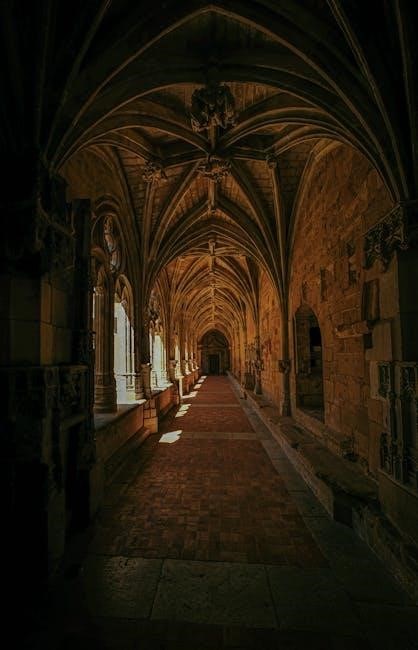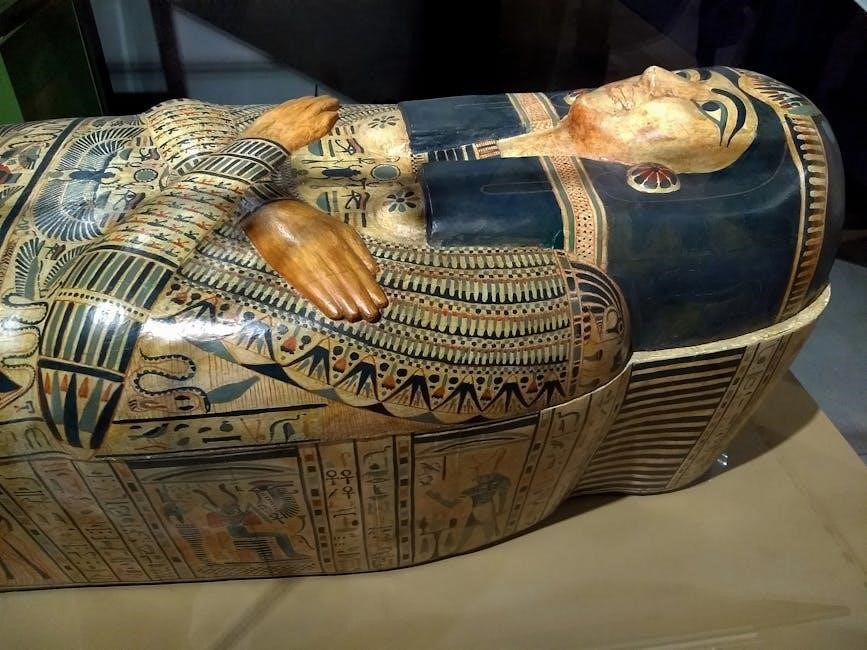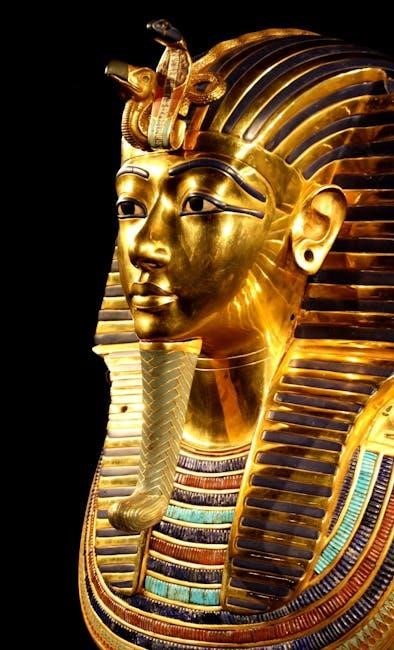Art History Timeline PDF: An Overview
Art history is a fascinating journey‚ reflecting changes in society‚ culture‚ and technology. Understanding this timeline is essential for anyone studying art or its history. It offers a visual representation.
What is an Art History Timeline?
An art history timeline is a chronological representation of art movements‚ styles‚ and prominent figures throughout history. It serves as a visual guide‚ illustrating the evolution of artistic expression from prehistoric times to the present day. These timelines typically outline key characteristics‚ artists‚ major works‚ and significant historical events that influenced art production.
Art history timelines are valuable tools for students‚ educators‚ and art enthusiasts alike. They provide a framework for understanding the relationships between different art periods and movements‚ as well as the cultural and historical contexts in which they emerged. By examining a timeline‚ one can trace the development of artistic techniques‚ styles‚ and themes over time‚ gaining a deeper appreciation for the richness and diversity of human creativity;
These timelines can take various forms‚ including charts‚ diagrams‚ and interactive digital resources. They often include images of representative artworks‚ making it easier to visualize the different styles and movements. Whether you are a student studying for an exam or simply an art lover seeking to expand your knowledge‚ an art history timeline can be an invaluable resource.
Importance of Art History Timelines
Art history timelines are vital tools for understanding the evolution and context of artistic creation. They provide a structured framework for navigating the vast landscape of art‚ enabling us to see connections and influences across different periods and cultures.
These timelines help to contextualize artworks within their specific historical‚ social‚ and political environments. By placing art within a timeline‚ we can better understand how artists responded to the events and ideas of their time‚ and how their work reflects the values and beliefs of their society. This contextual understanding enriches our appreciation of art and allows us to interpret its meaning more fully.
Furthermore‚ art history timelines facilitate the identification of artistic movements and styles. They illustrate the progression of art from one style to another‚ highlighting the key characteristics and innovations that define each movement. This knowledge is essential for anyone seeking to analyze and interpret art‚ whether for academic study or personal enjoyment. Overall‚ art history timelines are indispensable resources for anyone interested in exploring the rich and complex world of art.

Key Art Periods and Movements
Art history is marked by distinct periods and movements‚ each with unique characteristics. These eras reflect societal shifts and artistic innovation‚ shaping the course of creative expression across cultures.
Prehistoric Art (c. 30‚000-2000 BC)
Prehistoric art‚ dating back approximately 30‚000 to 2000 BC‚ offers a glimpse into early human creativity. Cave paintings‚ like those found in Lascaux‚ France‚ showcase depictions of animals and abstract symbols. These artworks provide insights into the lives‚ beliefs‚ and cognitive abilities of our ancestors.
These early artistic expressions often served ritualistic or communicative purposes. The materials used were derived from the natural environment‚ including pigments from plants‚ minerals‚ and charcoal. Prehistoric art demonstrates a fundamental human desire to create‚ document‚ and express oneself‚ even in the earliest stages of civilization. Hall of Bulls is one example.
It represents an important beginning for art.
Ancient Art (Egypt‚ Greece‚ Rome)
Ancient art encompasses the artistic achievements of Egypt‚ Greece‚ and Rome‚ each leaving an indelible mark on the history of art. Egyptian art is characterized by its monumental scale‚ symbolic imagery‚ and focus on the afterlife. Pyramids‚ hieroglyphics‚ and sculptures of pharaohs exemplify the grandeur and religious significance of Egyptian artistic traditions.
Greek art‚ known for its emphasis on humanism and idealism‚ celebrated the beauty and perfection of the human form. Sculptures‚ pottery‚ and architecture reflect a pursuit of harmony‚ balance‚ and rationalism. Roman art‚ influenced by Greek traditions‚ emphasized realism‚ practicality‚ and imperial power.
Ancient art laid the foundation for Western art.
Renaissance Art (14th-16th Century)
Renaissance art‚ flourishing from the 14th to 16th centuries‚ marked a revival of Classical ideals and a profound shift in artistic expression. Originating in Italy‚ the Renaissance witnessed a surge of interest in humanism‚ scientific inquiry‚ and the rediscovery of ancient Greek and Roman culture. Artists such as Leonardo da Vinci‚ Michelangelo‚ and Raphael exemplified the era’s emphasis on realism‚ perspective‚ and the celebration of human achievement.
Renaissance art was inspired by Classical Greek and Roman art‚ and it is known for its grace‚ harmony‚ and beauty. Renaissance art was embodied fine art‚ especially painting and sculpture.
The Renaissance laid the foundation for Western art.

Accessing Art History Timelines in PDF Format
Art history timelines are readily available in PDF format online. These resources offer a convenient way to explore art movements‚ key artists‚ and historical context. Downloadable PDFs provide accessible educational materials.
Free Downloadable PDF Resources
Numerous websites offer free downloadable art history timelines in PDF format. These resources cater to students‚ educators‚ and art enthusiasts seeking a structured overview of artistic evolution. Many PDFs compile significant art periods‚ movements‚ and key artists into a single document.
These free resources often include concise descriptions of each period’s characteristics‚ notable works‚ and influential figures. Some PDFs focus on Western art history‚ while others encompass global artistic traditions. These timelines can be valuable for quick reference‚ study aids‚ or classroom materials.
When searching for free downloadable PDF resources‚ consider the source’s credibility and the timeline’s accuracy. Look for timelines that provide detailed information and clear visuals. Many museums and educational institutions also provide downloadable PDFs on their websites‚ offering reliable and comprehensive information. These resources are an excellent starting point for exploring art history.
Art History Timeline PDF as a Teaching Resource
Art history timelines in PDF format serve as invaluable teaching resources‚ providing educators with a structured framework for presenting art historical information. These timelines offer a chronological overview of major art movements‚ styles‚ and artists‚ making it easier for students to grasp the evolution of art.
Teachers can use these PDFs to create engaging lesson plans‚ visual aids‚ and study guides. The timelines can be integrated into presentations‚ handouts‚ and online learning platforms. By providing a clear and concise overview of art history‚ these resources help students understand the context and significance of different artistic periods.
Furthermore‚ art history timeline PDFs can be adapted to various educational levels‚ from introductory courses to advanced studies. Teachers can select specific periods or movements to focus on‚ tailoring the timeline to meet their curriculum objectives. The PDF format also allows for easy printing and distribution‚ making it a versatile and accessible teaching tool.

Using Art History Timelines for Educational Purposes
Art history timelines are essential for education‚ offering a structured approach to understanding art’s evolution. They aid in visualizing connections between movements‚ artists‚ and historical contexts‚ fostering comprehensive learning.
Integrating Timelines into Art Curricula
Integrating art history timelines into curricula offers a structured approach to understanding the evolution of artistic expression. These timelines serve as visual roadmaps‚ guiding students through different periods‚ movements‚ and styles. By presenting art history chronologically‚ educators can help students grasp the interconnectedness of various artistic developments.
Furthermore‚ integrating timelines into the art curricula can help students understand the social‚ cultural‚ and historical contexts that influenced artistic creation. This approach encourages critical thinking and analysis‚ as students explore how societal changes shaped artistic styles and themes. It is also possible to use timelines to inspire students; people who are like them and have overcome adversity.

Moreover‚ timelines facilitate comparative analysis. Students can compare and contrast different art periods‚ identifying similarities‚ differences‚ and influences. This comparative approach enhances comprehension and encourages a deeper appreciation for the diversity of art across time and cultures. Timelines also make clear the relationship between art and society.
Art History Timeline for Students
For students embarking on the study of art history‚ a timeline serves as an invaluable tool for navigating the vast landscape of artistic creation. It provides a structured framework for understanding the chronological order of art movements‚ styles‚ and significant artists. This structured approach helps students organize information and build a solid foundation of knowledge.
Moreover‚ an art history timeline can greatly assist students in studying for exams. By having a visual representation of the chronological order of art movements‚ students can quickly recall information and make connections between different periods. The timeline serves as a visual aid that enhances memory retention and facilitates efficient studying. This is a great visual.
Furthermore‚ a timeline can ignite students’ curiosity and inspire them to explore specific art periods or artists in more depth. It provides a starting point for further research and encourages students to delve into the social‚ cultural‚ and historical contexts that shaped artistic creation.



